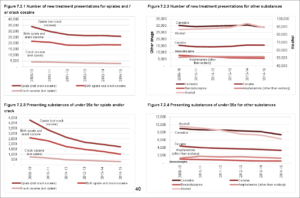Neptune
An important new (24 February 2016) report from NEPTUNE (Novel Psychoactive Treatment UK Network) focuses on club drug use among Lesbian, Gay, Bisexual and Trans populations and sets out to guide improved service and treatment planning. It describes patterns of club drug use among these sub-populations, as reported in the literature. It looks at the factors that may impact on the use of substances in LGBT populations and discusses drug-related and other harms associated with drug use among these populations, including high-risk sexual behaviours.
The (highly respected) authors — Dima Abdulrahim, Christopher Whiteley, Monty Moncrieff and Owen Bowden-Jones —highlight the importance of not using the information in the report to stigmatise, stereotype or pathologise LGBT populations, or to sensationalise the issue. They point out that while rates of drug use among LGBT people are higher than they are in the general population, just like general population the majority of LGBT and MSM (men who have sex with men) do not use substances.
Patterns of use
Overall, UK and international evidence suggests that rates of substance use are higher among LGBT groups than in the general population. Within these groups, rates of drug use are highest among MSM, although it is only a minority of gay men who use drugs. LGBT people have also been ‘early adopters’ of some new drug trends, such as club drugs and novel psychoactive substances (NPS).
The authors use Crime Survey data to illustrate this point:

Risk and harm
The authors highlight the links between a range of drugs (including alcohol) and high-risk sexual behaviour; including, in particular, Ecstasy, Ketamine, GHB and methamphetamine.
They also discuss the phenomenon of “chemsex” suggestions that among some MSM, there is a:
potent learned association between use of drugs (including alcohol) and sexual experiences. Some survey
respondents reported never having sex without using substances, or that they could not have sex unless they were using methamphetamine.
The authors also raise the issue of a minority of MSM who inject club drugs, greatly increasing the risk to their health — especially when mephedrone and methampetamine are the substances injected.
Treatment implications
The importance of this report is its discussion of what these higher rates of use and riskier behaviours mean for treatment. We know that most drug services remain predominantly focused on people who are dependent on heroin and/or crack cocaine rather than club drugs.
The authors argue that some LGBT people using drugs will require higher-intensity drug-related interventions, typically provided by specialist drug services. They examine whether mainstream or specialist MSM services or programmes are likely to be more effective.
There is an emerging body of evidence that many gay and other MSM may prefer to access specialist LGBT drug services rather than mainstream services. Some advocates have argued that gay-oriented treatment programmes may be needed to attract gay men to drug treatment and to retain them in treatment. The authors note that staff in such centres are more likely to be familiar with HIV risk behaviours related to drug use and likely to be perceived as credible sources for culturally appropriate HIV prevention messages.
The authors conclude that:
the priority should be for evidenced-based interventions to be made available for LGBT people experiencing drug problems, in a manner that is both accessible and acceptable. In many areas this would be as part of mainstream drug treatment services; however, in some areas with high prevalence rates or specific patterns of problems (e.g. chemsex) more targeted and specific services are warranted.
Despite the need for highly skilled practitioners with an up-to-date knowledge of club drugs, specific risks and key treatment interventions, it remains the case that the most important issue for both commissioners and providers is to ensure that there is:
a workforce with LGBT understanding and competence, that can make LGBT people feel safe, understood, visible and able to disclose sensitive issues.



